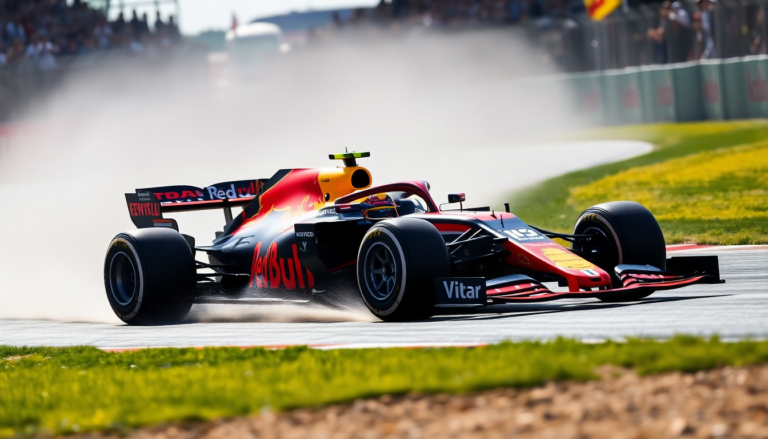Argomenti trattati
Max Verstappen has recently garnered significant acclaim from fellow Formula 1 champion Nico Rosberg, who praised the Dutch driver’s unique ability to make his Red Bull car perform in ways that many would consider extraordinary. During the Spanish Grand Prix weekend, Rosberg, the 2016 world champion, observed Verstappen’s driving and could hardly contain his enthusiasm for the way the car seemed to ‘dance’ beneath him. This admiration highlights not only Verstappen’s talent but also the struggles faced by his teammates in adapting to the same vehicle.
The challenge of the second seat at Red Bull
Red Bull Racing is currently grappling with a significant conundrum: finding a suitable second driver to complement Verstappen’s extraordinary skills. The team’s struggles have been apparent, particularly with Sergio Perez, whose performance has dipped dramatically throughout the season. After a disappointing previous year, Perez was shown the door, but the situation has only worsened in the current championship. Liam Lawson, initially brought in as a replacement, was quickly deemed insufficient and swapped out for Yuki Tsunoda after just two races. Despite Tsunoda’s improvements, he still faces challenges that mirror those of Perez, indicating a broader issue with the car’s design that seems tailored specifically for Verstappen’s driving style.
Understanding Verstappen’s driving style
Rosberg pointed out that Verstappen’s driving style is not just unique; it’s almost an art form. The way he handles the car, with a remarkable ability to manage oversteer while navigating corners, is what sets him apart. His car, designed to accommodate his preferences, has been notoriously challenging for other drivers to master. The recent iterations of Red Bull cars have been described as ‘nervous’ and ‘front-end inclined’, making it a daunting task for anyone other than Verstappen to extract peak performance. This design philosophy creates a stark contrast in performance levels among team members, leading to a notable disparity in results.
The difficulties faced by teammates
As Rosberg observed, the car’s behavior is truly a handful. For a driver like Tsunoda, who is still finding his footing in the competitive world of Formula 1, adapting to the RB21’s characteristics is no easy feat. Verstappen’s ability to ‘dance’ with the car, as Rosberg eloquently put it, highlights the gap in skill and experience between him and his teammates. The German former driver noted, “Verstappen is like a work of art, because his car is all over the place, and he’s put so much oversteer into that car, but he holds it and dances on the rear within the limit.”
The magic of Verstappen’s control
Watching Verstappen in action, especially during high-stakes moments like the Spanish Grand Prix, is akin to witnessing a master perform. His control over the car is remarkable, and it allows him to push boundaries that many other drivers simply cannot. The exceptional balance he maintains despite the car’s unpredictable nature is a testament to his skills and instincts as a driver. Rosberg’s remarks on how impressive it is to see Verstappen handle such a challenging vehicle reflect a broader admiration for the Dutch driver’s capabilities. It’s clear that Verstappen’s talents are not merely a product of his car but also a result of years of honing his craft.
Looking ahead in the championship
As the season progresses, the focus remains on how Red Bull will navigate the complexities of their driver lineup and whether they can provide a vehicle that allows both drivers to compete effectively. The disparity in performance raises questions about the team’s strategy and the future of its second seat. For Verstappen, the pressure to maintain his level of excellence continues to mount. As he faces competitors like George Russell and Lewis Hamilton, every race becomes a crucial point in establishing his legacy in the sport. His recent clashes, particularly with Russell, have led to discussions about the evolving dynamics within the championship and how seasoned drivers are adapting to the rising stars.
The future of Red Bull and its drivers
With the 2025 season well underway, it will be fascinating to see how Red Bull addresses its challenges. The team’s ability to adapt the car to suit multiple drivers without compromising its performance could be the key to their continued success. Verstappen’s extraordinary talent raises the bar, but it also highlights the difficulties others face when trying to keep pace. As the championship unfolds, all eyes will be on how the team evolves and whether they can find a solution to their current driver dilemma, ensuring that they remain a formidable force in Formula 1.

